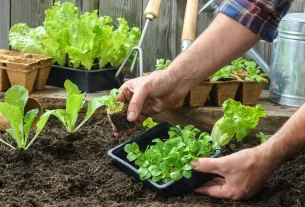A successful vegetable garden starts with careful planning. You’ll need to make a list of all the vegetables you want to grow. Consider how much you’ll be eating, and what you’ll preserve if you’re able to grow more than you need. Then, make a plan on paper, including when to plant each variety and when to fertilize and replant. In addition, you can add reminders on your list to keep yourself on track.
After planning the layout of your vegetable garden, you’ll need to prepare the soil for planting. It’s best to start with a seed packet and do some research online. You can find a soil test that will tell you how fertile your soil is. Before you start planting, you should make sure that the soil is not too acidic, as this will affect the vegetables’ growth. Once you’ve mapped out the space and the crops, you’ll need to add some compost and natural fertilizers.
Next, you’ll need to prepare the soil. Once the soil is ready, you can start planting. If you have sod or clay soil, you’ll need to remove it first. Before planting, you can do soil testing. You’ll learn how fertile your soil is by testing it. You’ll also need to determine the type of growing medium. A vegetable garden should have a pH of 6.0 or higher. If you’re unsure, you can always buy a plant-specific fertilizer that will enhance the nutrients in your soil.
If you’re a beginner, consider planting a few easy-to-grow vegetables. A new gardener should start by adding compost and natural fertilizers to their soil. A garden supply store can test the pH levels of your soil and suggest the right type of supplements. You can also buy specially made soil at a local gardening store. Depending on the type of vegetable plant you want to grow, you’ll need to consider planting dates.
Before planting, you need to prepare the soil. A garden strip defines the space for your garden and helps keep grasses out. In addition, you can prepare a soil sample at the local feed store. Once the soil is ready, add compost and organic fertilizers. You’ll need to water it regularly to keep it healthy and growing. You’ll need to apply fertilizer to the soil twice a year. This is a good way to prevent weeds.
In autumn, it’s wise to plant a winter cover crop. The purpose of this crop is to protect the soil from erosion. The most common cover crop is oats, which can be purchased at most feed stores. You should plant oats between early August and mid-September. The plants will grow to their maximum during the fall. These vegetables are often the only ones in the house to grow oats in the winter, so they should be watered frequently.





